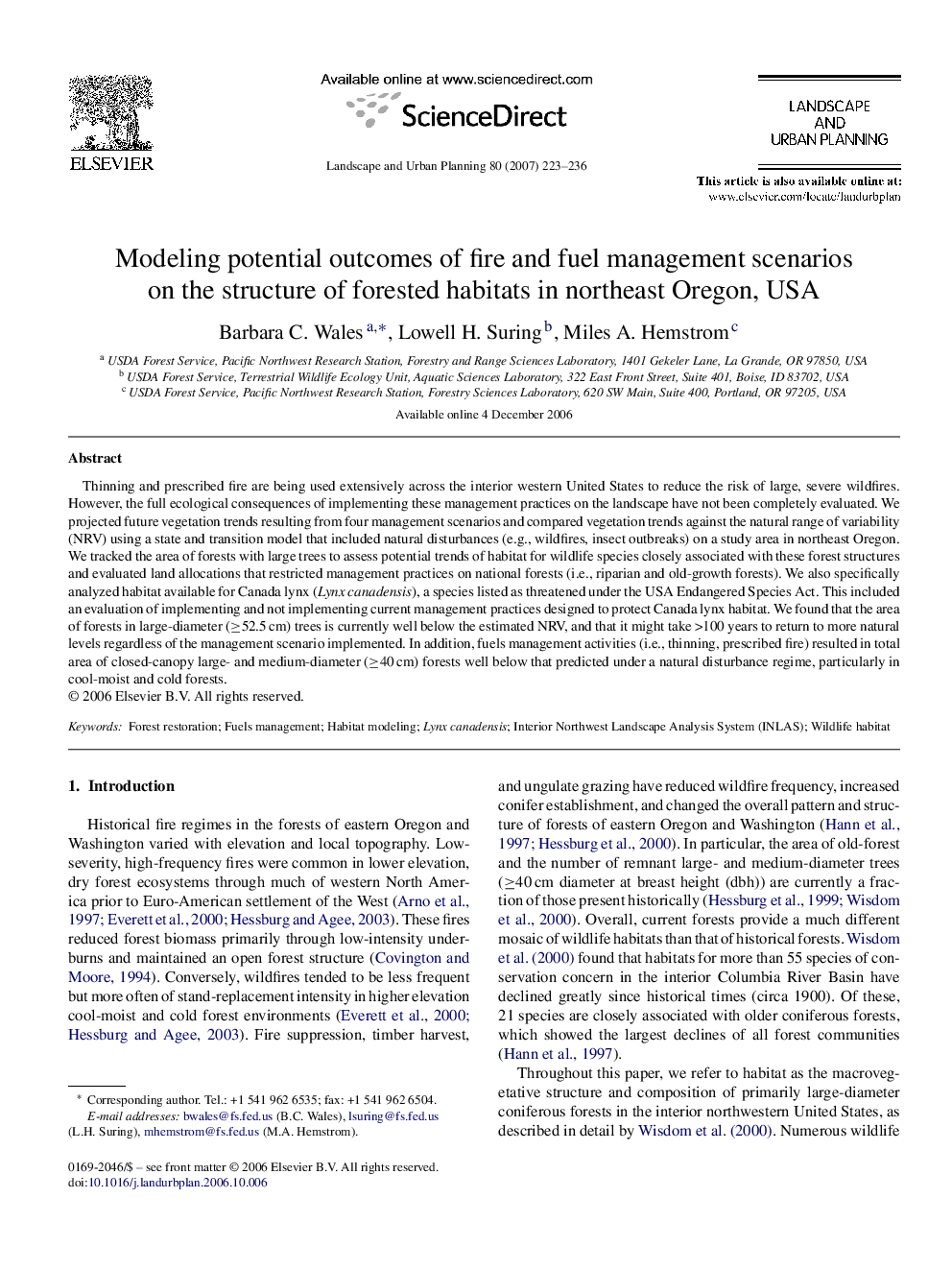| Article ID | Journal | Published Year | Pages | File Type |
|---|---|---|---|---|
| 1050470 | Landscape and Urban Planning | 2007 | 14 Pages |
Thinning and prescribed fire are being used extensively across the interior western United States to reduce the risk of large, severe wildfires. However, the full ecological consequences of implementing these management practices on the landscape have not been completely evaluated. We projected future vegetation trends resulting from four management scenarios and compared vegetation trends against the natural range of variability (NRV) using a state and transition model that included natural disturbances (e.g., wildfires, insect outbreaks) on a study area in northeast Oregon. We tracked the area of forests with large trees to assess potential trends of habitat for wildlife species closely associated with these forest structures and evaluated land allocations that restricted management practices on national forests (i.e., riparian and old-growth forests). We also specifically analyzed habitat available for Canada lynx (Lynx canadensis), a species listed as threatened under the USA Endangered Species Act. This included an evaluation of implementing and not implementing current management practices designed to protect Canada lynx habitat. We found that the area of forests in large-diameter (≥52.5 cm) trees is currently well below the estimated NRV, and that it might take >100 years to return to more natural levels regardless of the management scenario implemented. In addition, fuels management activities (i.e., thinning, prescribed fire) resulted in total area of closed-canopy large- and medium-diameter (≥40 cm) forests well below that predicted under a natural disturbance regime, particularly in cool-moist and cold forests.
